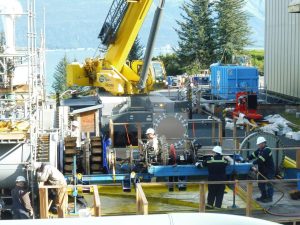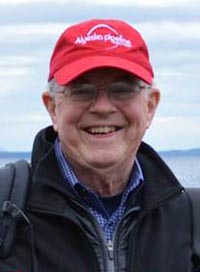By Alyeska Corporate Communications
Alyeska’s Traveling Health and Safety Fair spent four days in the Prince William Sound communities of Tatitlek and Chenega Bay in early June, marking the 21st year of the annual event. Eight health care providers from across Alaska, nine UAA pharmacy students and faculty, and a pair of Alyeska employees joined the crew of Edison Chouest Offshore’s utility tug Ross Chouest, which transported the contingent on its five-day journey from Valdez to Tatitlek to Chenega Bay and back.

The group facilitated two full-day schedules of events each in Tatitlek and Chenega Bay. Both stops included a free health fair available for all residents, where they could receive basic biometric screenings and information on nutrition, healthy relationships, tobacco prevention, active lifestyles, and more. Throughout both days there were also hearing, vision, and development checkups for the community’s kids and classroom sessions about mental health and wellness, first aid and handwashing, positive communication, and healthy food choices.
Each morning, health fair contributors ate breakfast with local youth at their schools. There were also special men’s breakfasts, women’s teas, and community dinners that packed each school’s respective gymnasium, offering tasty and healthy menus that were headlined by Cajun-style shrimp and corn soup created by ECO Chef Chad Cavalier.
Local leaders and high school students also had the opportunity to tour the Ross Chouest, which provides a variety of services around the Prince William Sound area. Captain Carlos Alemany and his enthusiastic crew led visitors around the unique vessel’s deck, into its engine room, and other areas.
Even rare moments of downtime were filled with opportunities for health fair participants to encourage healthy lifestyles by playing basketball or jumping rope with local youth and assist in community projects like sewing tribal regalia, organizing donated library books, and prepping healthy snacks for school kids.
“The Prince William Sound Traveling Health Fair is the culmination of months of careful planning and preparation by Alyeska staff, contractors, and community partners,” explained Kate Dugan, Alyeska’s Valdez Communications Manager. “It was special to make the trip for the first time with Edison Chouest Offshore and the terrific crew aboard the Ross Chouest. The event is always an adventure and this year was no exception.”

